You must sand your project for a beautifully elegant finish on wood or metal. Now, sanding can be a long and drawn-out process if you do it by hand. Thankfully, with technology, you can use power sanders to save not only your arm on demanding work but also save yourself time. With that said, not all sanders are made equal. Many types of sanders are on the market, and picking the best one for the task is crucial. That is why Acme Tools has decided to help the newcomer who does not know where to begin. This guide is also helpful to the professional who wants to upgrade or expand his workshop.
We will review each specific type’s price, what power it runs on, the cost, size, and a link to an overall analysis of the machines. If you are unfamiliar with a few things or need a quick refresher, you can skim through and get the necessary information.
Types of Sanders
Belt Sanders
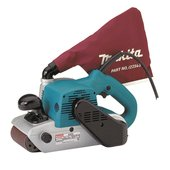
This option, of our many different types of sanders at Acme Tools, is perfect for removing substantial amounts of material or old paint. If you are varnishing or updating some old furniture, you will use this as a starting point. This tool is either a handheld option or a benchtop mounted for the user’s preference. Handheld gives you flexibility and access to tight corners and crevices, while benchtop gives you more control over the material. Belt sanders are ideal for anyone working with wood or metal, from DIYers to trade professionals or contractors. Anyone who uses this tool daily can find it has many uses, such as flattening table tops and scribing countertops.
Pros:
- Fast stock removal.
- Linear sanding movement.
Cons:
- Does not create a smooth finish.
- Can remove too much too fast if you are not paying attention.
Disc Sanders w/Belt
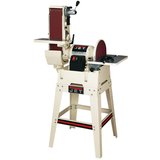
Disc sanders are for larger jobs and shape materials like wood, plastic, and metal. This type of machine comes stationary or as a benchtop device that will sit on most worktables. You will find this usually attached to a belt sander because these two machines are for the beginning steps of any project. You can either remove the material or shape the piece to a rough or final layout. This machine is expensive since you pay for two of the many types of sanders in one frame. This sander is excellent for wood, metalworking, and any fabrication dealing with plastics or soft metals.
On the other hand, this device would be perfect for the well-seasoned DIYer and the trades professional, who would use this machine to make their living or have money to spare.
Pros:
- Shapes, sands, and smoothes both flat and curved surfaces.
- Combines both belt and disc sanders.
Cons:
- Large and awkward in size.
- Can be overly expensive to purchase.
Drum Sanders
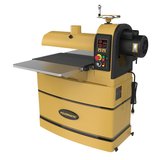
A drum sander is a finishing tool and should NOT be confused with a planer. The difference between these machines is that planers cut and drum sands. While using a sanding drum to adjust thickness may be tempting, it would not be recommended. You face the issues of burnt sandpaper, heat buildup, and ruining your piece of wood. You would use this with your planer to remove milling marks and give it a smooth look. This type of sander is not meant for the casual DIYer but more for the professional with an eye for detail who wants their work pristine.
Pros:
- Quickly removes large amounts of stock
- Helps maintain perfectly squared edges.
Cons:
- Heavy and not easily portable.
- Dust collection is a must.
Edge Sanders
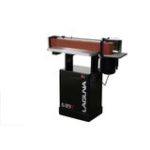
You get versatility with this machine as it allows you to edge, face, angle, and contour your pieces. These heavy stationary machines assume a lot of space in a workshop. So, once you set down the sander, you better be happy with where it is and if it makes your workspace flow better. With this model, you can make perfectly flat edges, shape, sand, and smoothen flat or curved edges. A professional grade grinder like this would be in a public workshop or someone who does metalworking or woodworking for a living.
Pros:
- Creates and maintains perfectly flat edges.
- Shapes, sands, and smoothes flat and curved surfaces
Cons:
- Heavy and not easily portable.
- Can be overly expensive to purchase.
Finishing Sanders
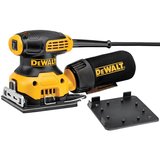
The original sanding machine, the Finishing Sander, or Palm Sander, still holds purpose today for those who know of it and how to use it correctly. This sander works because it spins and turns, never going the same way twice, to produce little to no scratching across the wood grain. It is necessary when you are creating a finish to a project. You are designed to get into corners or hard-to-reach spaces where a circular sander or the band sanders cannot reach. You could also use this tool to remove old veneers or putty from workpieces. It is a great device to add to any beginner’s workshop and can be used whether you are a seasoned pro or a contractor. You will be glad to have this sander when you need a fine, smooth, quality finish.
Pros:
- Can sand hard-to-reach places and surfaces.
- Less likely to leave cross-grain marks.
Cons:
- Removes fine amounts of wood rather than large amounts of stock.
- Sandpaper installation is harder than random orbital sanders.
Random Orbit Sanders
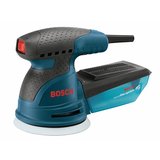
A simple handheld tool that makes the usual sanding process more accessible compared to hand sanding. This device works similarly to a finishing sander, but the kind of pads it uses differs. While a finish sander uses a square or rectangle sheet that gets into tight corners, a random orbit sander has circular pads that attach to the machine by velcro. Another change is while they both vibrate in tiny circles, the random orbit sanders spin in circles, eliminating swirls from the workpiece. You would use this as one of the final steps before finishing a project, usually sanding the wood or any material down to a smooth surface before adding any paint, veneer, or stain. It is an overall must-have tool for woodworking and appropriate for all skill levels.
Pros:
- Quickly removes large amounts of stock.
- Increased versatility.
Cons:
- Can’t get to corners.
- Can remove too much if you are not careful.
Spindle Sanders
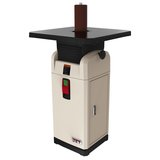
Adding arcs, curves, or even holes to your pieces, you want them to be uniform and smooth. This machine excels in giving smooth edges and grinding close to your design. Get accuracy thanks to its oscillating and rotating motions, saving time and sandpaper roll replacements and preventing burns and marks on pieces. This sander, or the Oscillating Spindle Sander, comes in either a benchtop or stationary size, allowing for stability in your grinding. Sanding Grits can easily be changed by using a different sanding sleeve. Along with its built-in flat surface where you lay your work, having this on a stable surface allows for detail and intricacy. A device like this has a project in mind and is unnecessary in every shop. But a spindle sander is an excellent addition if you want to improve your skills and have some extra money.
Pros:
- Can sand both wood and metal materials.
- Can make unique edges, curves, and angles.
Cons:
- Not suitable for large projects.
- Not very versatile.
Conclusion
Sanding is not a fun job, but it needs to be done to get the best out of your work. With the information on the several types of sanders, pick the one that best suits you and your skill level. Comment below if you are unsure about a particular sander or which one to use for a specific job. Our blog also has other buying guides covering seasonal tools and items any handy person would want in their home. Let us know if more posts like this are what you’re looking for and what kind of content you would like to see from Acme Tools. We are here to help so you can always #DoYourBestWork.


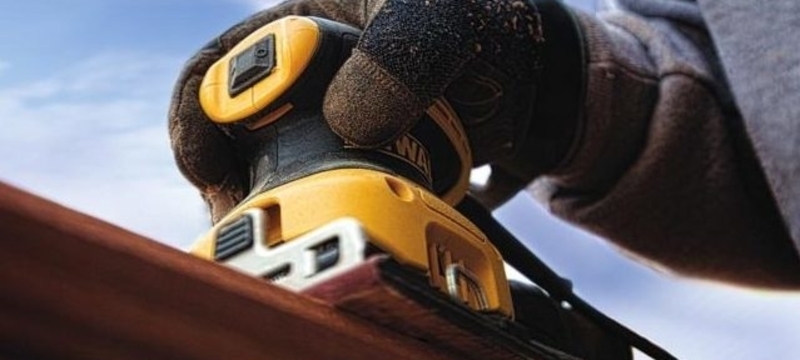
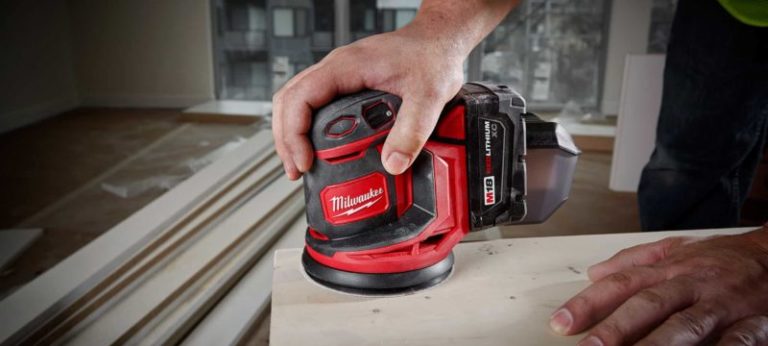
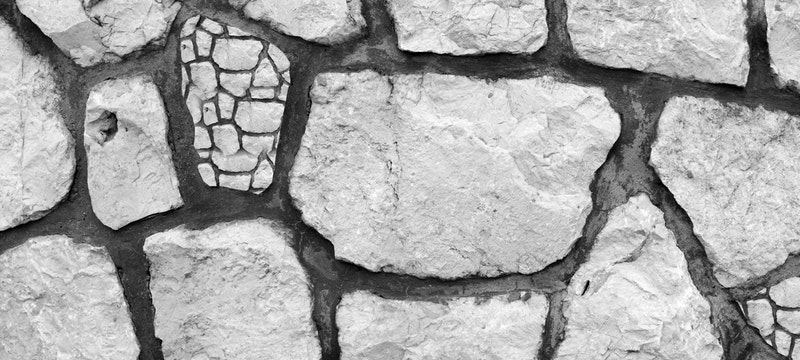
3 Comments
Michelle Brown
November 24, 2020 at 11:32 pmThanks for sharing such nice article. Keep doing.
Colleen Lecher
November 10, 2023 at 8:29 amI need to sand 4×4 posts that are 4 foot tall. What is the easiest way to get a good finish before painting or sanding.
Acme Tools
November 10, 2023 at 9:45 amHi Colleen, Like many other tool-related tasks, the ease of a tool completing a task is inversely related to the cost of the tool. The easier the job becomes, the more expensive the tool is. The easiest way to sand 4×4 posts is to purchase a drum sander, and all you have to do is feed the posts through it until you reach the desired finish, but you are looking to spend $1500+. This would be an option if you have hundreds of posts to do, but if you only have a handful of posts, you might want to consider a 5″ Random Orbit Sander that will cost under $100.00.
Thanks, Acme Tools